
 |
|
|
Looking Ahead
Volume 59 Number 9 Date 06/26/2014 EUROPEAN CORN BORER - The treatment window for first generation larvae has opened near Beloit, La Crosse, Madison, Spring Green and other advanced southern and west-central locations. Close inspection of susceptible cornfields and Bt refuge areas is advised during the next 2-3 weeks to determine the percentage of whorls infested with small larvae and if control is justified. Conventional or organic treatments directed against the early instar stages must be applied before boring into stalks and midribs begins around 1,100 degree days (mod base 50°F). APPLE MAGGOT - Degree day accumulations in portions of southwestern and south-central Wisconsin are appropriate for fly emergence. Red sphere and yellow sticky traps should be placed at this time to detect the earliest emerging adults. The treatment threshold for apple maggot remains at five flies per trap per week for traps enhanced with ammonia lure and one fly per trap per week for unbaited traps. WESTERN BEAN CUTWORM - The annual trapping survey is now in progress and the results obtained over the next eight weeks are expected to reveal the peak emergence period, potential problem areas, and the relative abundance of western bean cutworm adults in 2014. A few early moths could begin collecting in pheromone traps before the end of the month. JAPANESE BEETLE - Emergence of the first beetles of the season was noted on June 24 in La Crosse and Rock counties. Damage to fruit trees, ornamentals, nursery stock and field crops should be anticipated during the next two months throughout the southern two-thirds of the state. Populations of this beetle are now established as far north as Barron County in northwestern Wisconsin and Oconto County in the northeast. TRUE ARMWORM - Significant flights of 52-121 moths were registered in the Coon Valley, Janesville, Manitowoc and Marshfield black light traps from June 19-25. This development emphasizes the need for continued monitoring of corn, wheat and other susceptible crops in July. CORN ROOTWORM - Research indicates that 50% of overwintered eggs hatch between 684 and 767 degree days (modified base 52°F), a threshold expected to be reached by July 1 near Madison. Evidence of root injury should become noticeable in heavily infested fields next month, especially where soils remain saturated. The first beetles ordinarily appear around July 4. -- Krista Hamilton, DATCP Entomologist 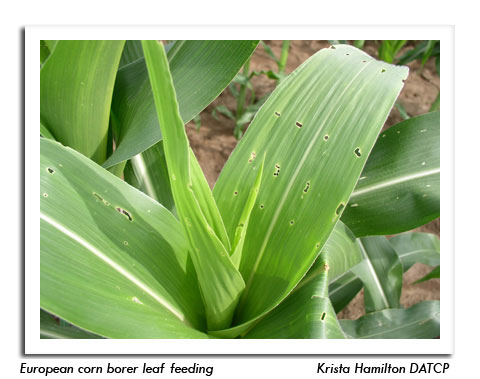
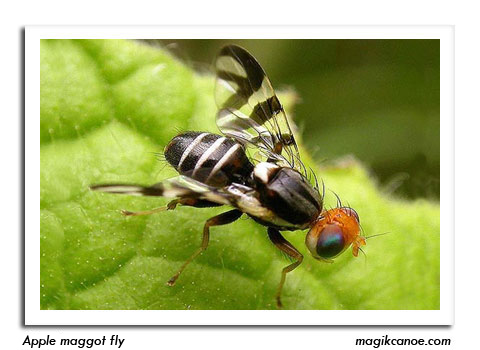
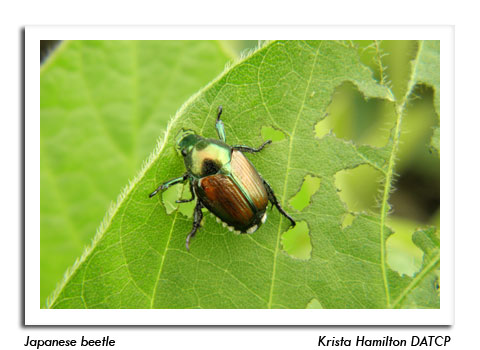

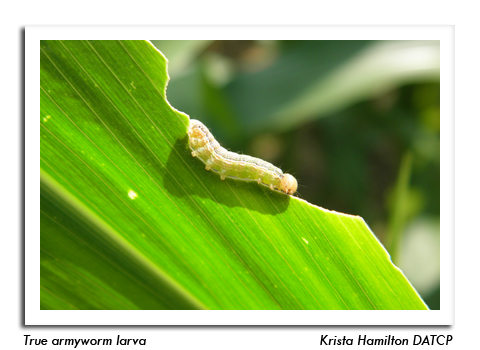
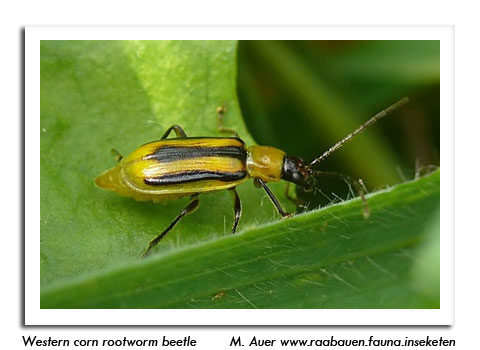
|
|
|